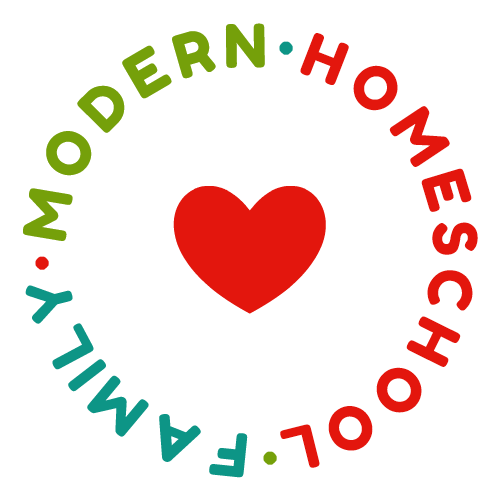

What Is Kumon and Does It Really Work?

This post was originally written for a different website; however it has been removed that site since it was published. I still believe it has valuable information and publishing it again, here.
You’ve likely seen ads on television or passed by Kumon centers in your daily travels. Have you every wondered, exactly, what Kumon is?
About 9 months ago, I was introduced to Kumon through one of their publicity firms, learned about their program and decided to try it out. Before I get into the results, let’s start with a little bit of history.
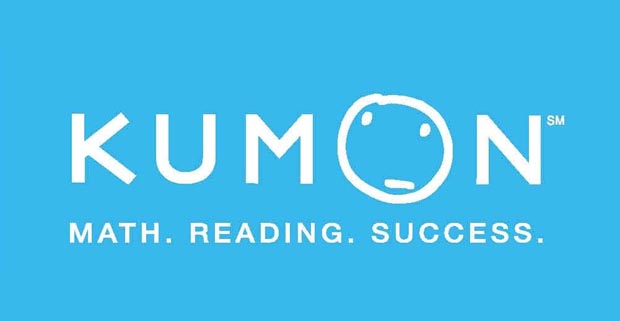
The History of Kumon
In 1954, Toru Kumon, a high school math teacher in Japan, began developing materials to help his second grade son who was struggling in math. With a few key principles in mind, Mr. Kumon created a series of sequenced materials for his son to complete after school. His son improved in math; Mr. Kumon’s neighbors heard about this success and began asking him to work with their children. The first Kumon center opened in 1956 and it continued to grow, expanding into North America in 1974.
Now you know why Kumon is so familiar to you already; it’s been around for over 50 years! They offer after school programs for both math and reading. We elected to participate in the math program, since my daughter didn’t feel confident in that area and has always been a strong reader.
What is Kumon?
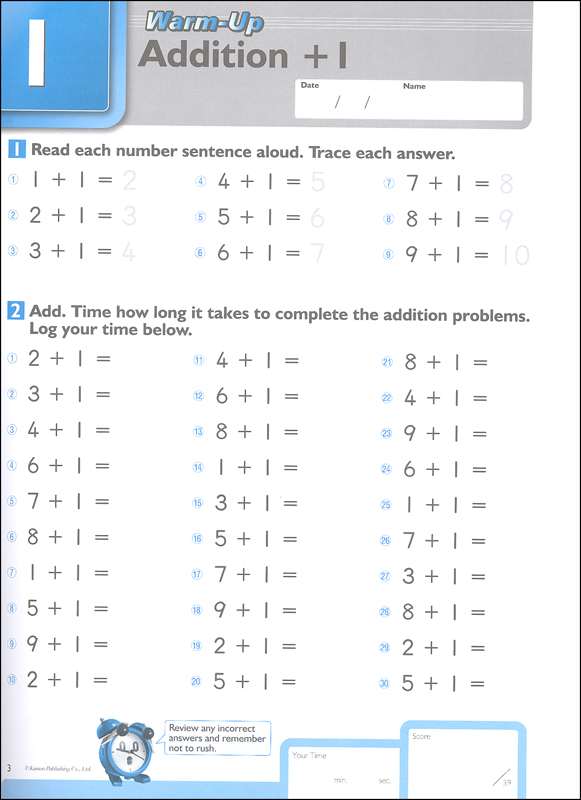
The curriculum consists of hundreds of short assignments (worksheets) completed in sequential order. Every assignment is timed and graded. Students must get close to 100% accuracy within a set time in order to be able to move on to the next level of worksheet.
In our case, my daughter was assigned additional “speed drills” for addition and multiplication practice.
What to Expect During Your First Visit to Kumon
When you enroll in the program, you will sit down with a center instructor for an orientation. During the orientation, we watched a Power Point presentation and went over parent expectations. Parents will be required to complete some paperwork (it wasn’t terribly long) and children will take a placement test.
The placement test is actually a series of tests. Your child will work through different “leveled” evaluations until he or she can not complete any more. These tests are immediately graded and your child will be sent home with his or first assignments to be completed. All in all, expect to spend roughly an hour and a half during your first visit.
What to Expect at Home
Page 8 of the Kumon Parent’s Guide says “There’s no getting around it: Kumon is extra. Extra time. Extra homework. Extra effort.“ Boy, do they mean it.
Children are expected to complete their Kumon assignments 7 days a week. My daughter was assigned 10 worksheets a day, 7 days a week, plus 10 minutes of “speed drills” each day. Parents, you’ll be expected to grade the assignments immediately, return them to your student to correct and participate in the speed drills. Be prepared to commit about 30 minutes a day to Kumon assignments.
In addition to the daily at-home assignments, children visit the Kumon center 2 times per week to turn in their homework and receive the next batch.
Our center was flexible enough when it came to our crazy travel schedule, giving us a week’s worth of assignments at a time, when we let them know when we could not make it back twice in one week.
What to Expect on Visits to the Center
During your child’s twice-weekly visits to the center, he or she will turn in his or her homework to the instructor who will review it to make sure your child is on course. The center instructor may work on speed drills with your child and watch him or her work through another set of worksheets.

Do not expect the center instructor to teach the materials to your child in the same manner as in a traditional classroom. The instructors do not lecture, demonstrate or tutor students through the curriculum. The Kumon method utilizes in the “learn-by-doing” approach. The instructor provides guidance, praise and assistance, if absolutely needed.
According to the parent materials provided, the Kumon approach believes that having a child try to solve the problems on his or her own teaches them to think for themselves and build confidence.
How Much Does Kumon Cost?
Let’s face it, cost factors into the equation for most of it. Each Kumon center is independently owned and operated, so costs will vary by location. In general, though, expect to pay $95 – $125 per month, per subject, plus a $30 – $50 one-time registration fee.
Does Kumon Really Work?
At the beginning of our trial of Kumon, my daughter was entering 8th grade Pre-Algebra. After her initial placement evaluation, the instructors at the center thought she should start with addition of single-digit positive numbers (almost near the beginning). She understood single-addition math just fine, but the center instructor wanted her to be able to do the math faster before moving on. After attending the orientation and reading through all of the parent materials, I understood why our instructor made this decision but, unfortunately, my daughter did not. She was embarrassed and her self esteem was very low.
We worked through the program with as much consistency as possible. I’ll readily admit that we were not as consistent with the program as we should have been and we may have bitten off more than we could chew this school year. After nine months with Kumon we did not see a dramatic increase in her Pre-Algebra grade, but we weren’t expecting to either. It’s not a tutoring program, remember?
I have noticed other, smaller changes, though. Her confidence in math is slowly starting to improve and she’s extremely quick and accurate with her addition, subtraction, multiplication and division, which does help avoid simple calculation errors on her regular school math assignments .
As mentioned before, Kumon has been around for over 50 years. A program that doesn’t deliver results wouldn’t survive that long. It’s important, to remember that individual results will vary and completing those daily assignments and staying on course is vital to your child’s success in the program.

Disclosure: I was provided 9 months of the Kumon math program for the purposes of this review. All opinions in this blog post are strictly my own.
RELATED POSTS
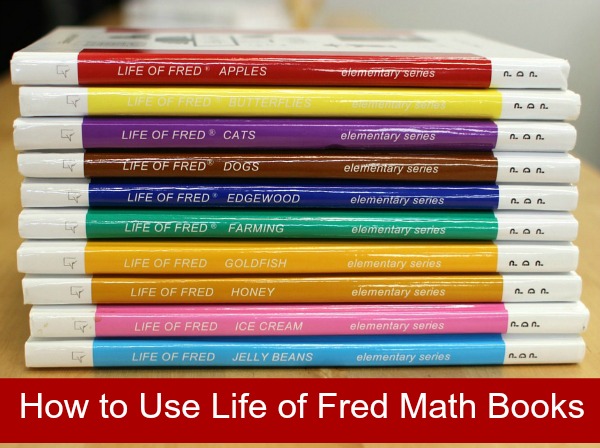
How to Use Life of Fred Math Books
Is an all-in-one curriculum right for you.

How to Supplement Your Homeschool Art Program
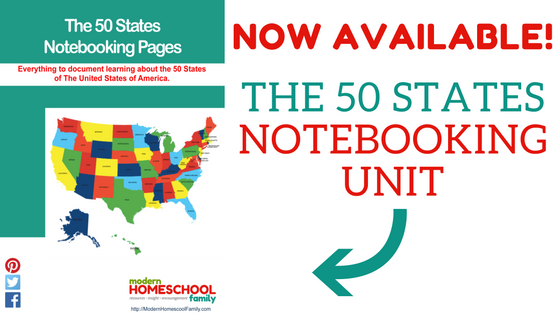
Now Available! The 50 States Notebooking Unit

18 Curriculum Resources for Homeschoolers
What if the parents have no Math knowledge will they enroll their students in Kumon?
I agree that Kumon has a great after school program for kids to help them improve their school works. However, I tried Beestar during pandemic and surprisingly, it worked much better for my kids. The fact that it is all online and free of charge, my kids can focus on their studies by staying at home and I did save decent amount of money.
Leave a Reply Cancel reply
Your email address will not be published. Required fields are marked *
Our new contact-free system is easy to use and keeps everyone safe during the pandemic.
Find out all you need to know by visiting the links below., request hw for pickup, home-grading info, summary: the 3-step hw exchange, barranca and campus centers have different hw exchange guidelines. please read through your center’s guidelines carefully.
- Make sure to home-grade your child’s HW daily!
Mistakes in HW must be addressed immediately; this is essential to your child’s learning process.
- Drop off graded, completed homework at your center (as you pick up requested HW).
Don’t forget to write your child’s name (Last, First) on anything you turn in.
Last updated by david wu 4/21/2020.
© 2024 Irvine Kumon
Meet Your Local Instructor
Search to find your nearest Kumon centre
The Kumon Method

Individualised instruction

Self-learning

Small-step worksheets
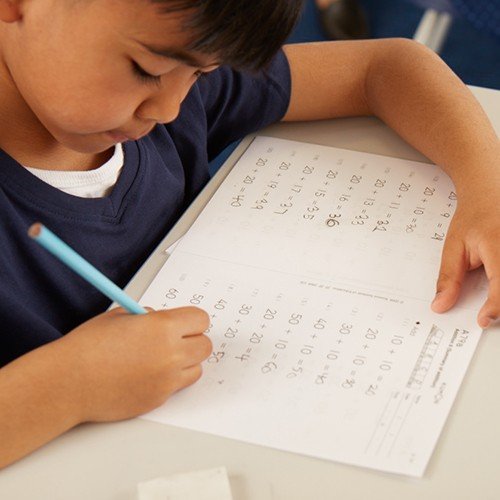
Kumon Instructors

[External Link to English Version of Japanese site]
Browse our help topics
Use the topic areas below to find out more about Kumon study
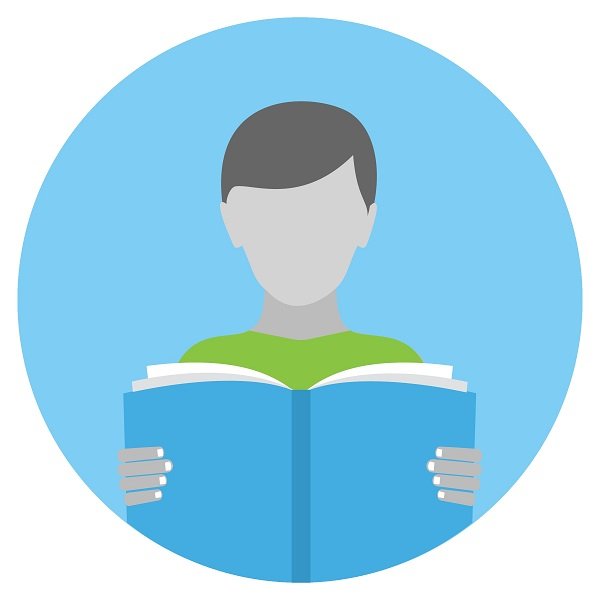
What is Kumon?
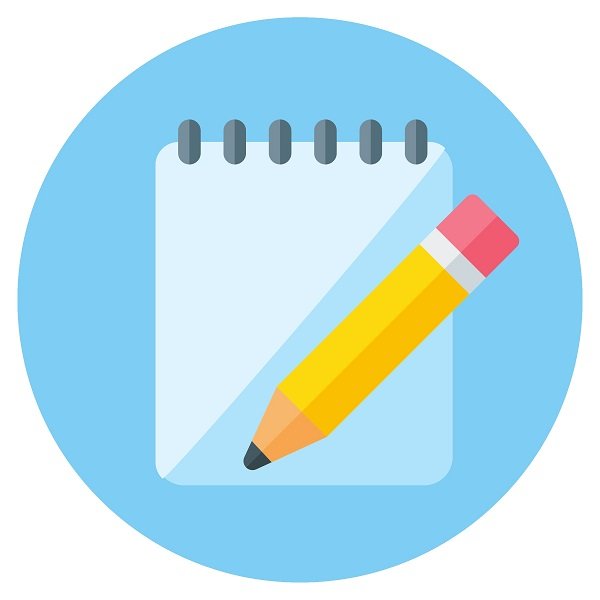
How does Kumon work?

Becoming an Instructor
Page title.
Home > The Kumon Method and Its Strengths > Small-Step Worksheets > The Kumon Programs
The Kumon Programs
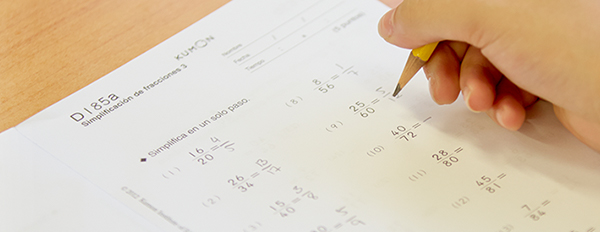
At Kumon we simultaneously nurture a high level of academic ability as well as the ability to self-learn with our math and language worksheets
The Kumon worksheets used around the world are all based on the same approach. That is, they allow students to steadily advance to higher level material by letting all students begin from a point that they can do comfortably, regardless of their age or grade at school, and by making it possible for each student to study at the “just-right” level, wherein the burden on students is increased little by little. Our worksheet developers at Kumon are constantly learning from children in an effort to improve our current worksheet lineup and also to develop new and better worksheets to provide Kumon students with the best possible learning materials.
Math Program
The Kumon math program sets out to enable learners to master high school level mathematics through self-learning. The worksheets are structured around essential elements for the study of high school level differential and integral calculus such as: calculations using the four operations, equations, factorization, and functions and graphs. The worksheets are also designed to gradually increase in difficulty using small steps so that even students in elementary school or preschool can begin advancing to differential and integral calculus through self-learning. As of December 2023, the math worksheets are provided in eleven different languages for study around the world.
Math worksheets studied in various countries
Math worksheets studied in various countries ─japanese.

Math worksheets studied in various countries ─Chinese

Math worksheets studied in various countries ─German

Math worksheets studied in various countries ─Indonesian

Math worksheets studied in various countries ─Spanish

Math worksheets studied in various countries ─Thai

Native Language Programs
The Kumon native language programs set out to enable learners to develop an advanced level of reading ability through self-learning. Students are first exposed to both new and familiar vocabulary. They then learn letters, and in some cases characters, in the context of words and also new words in the context of sentences. Next students develop their understanding of simple sentences, then paragraphs, and systematically advance to the practice of summarizing passages in their own words, which increases their reading comprehension ability. Ultimately, students get to the point where they are able to read classic and contemporary literary masterpieces from around the world, and think critically about the messages they contain. At Kumon we also make use of the Kumon Recommended Reading List (RRL), a list of books from various genres listed in order of difficulty, to help promote reading among students. As of December 2023, the native language programs are provided in eight different languages for study around the world.
Native language worksheets studied in various countries
Native language worksheets studied in various countries ─japanese.

Native language worksheets studied in various countries ─Thai

Native language worksheets studied in various countries ─Portuguese

Native language worksheets studied in various countries ─Chinese

Native language worksheets studied in various countries ─Spanish

Native language worksheets studied in various countries ─English

Japanese as a native language program
Reading is the key to learning. We want students to have the experience of reading many books from different genres in order to learn about different ways of life and various societies, and in so doing, find out their dreams and aspirations and come up with goals for themselves.
Therefore, the aim of this program is to foster students with advanced reading comprehension skills who can tackle any text that comes their way, and continue to read and develop themselves for the rest of their lives.
Native language worksheets studied in Japan
At Kumon, we use the phrase “advancing beyond school grade level.” In the Kumon Japanese program, this entails students reading and understanding passages of an advanced level. We want students to read a large number of books, but more importantly, our intention is for students to develop the ability to challenge themselves to read books of any difficulty level, or from any genre, and expand the scope of their reading on their own. To gain the ability to do just that, our students develop their reading comprehension ability through worksheet study. The key method used to develop students’ reading comprehension ability is summarization.
Differing from simple summaries where students pick out and write down only the key points of a passage, Kumon summarization involves students taking a paragraph and recreating it in the form of a single sentence in line with its theme, while maintaining the flow of the original passage. When summarizing a passage at Kumon, students use keywords related to its theme, they maintain the nuances unique to the original passage, and use words that they themselves feel are important. Therefore, it is not only necessary that students are able to derive the correct meaning of the passage but they also require a variety of skills, such as the ability to use words and terms correctly and the ability to restructure texts. This process enables students to develop a strong understanding of what it means to read and understand a passage. Through comparing the differences between their summary and the original passage, students realize for themselves the way they understood the passage. By examining and thinking deeply about these differences students hone their reading comprehension ability.
The Kumon Recommended Reading List (RRL) consists of 650 carefully selected publications, from which students and parents can easily choose new books. The selected publications cover a wide range of genres, spanning old and new classic literature from around the world as well as books that are popular among children. The RRL has 13 levels, and on each level there are 50 books arranged in ascending order of difficulty. The worksheets contain various extracts from the books on this list. There are many cases of students who have embarked on a journey into the wide world of reading because they wanted to read the rest of the works that they encountered in extract form in the worksheets.
We hope that through fostering students with advanced reading comprehension skills who can read a wide range of books, these students will be able to increase their knowledge, develop different ways of looking at things, learn how to think deeply, and experience profound emotions, all of which will prove invaluable for children today, as they are the ones who will go on to address the world’s challenges in the future.
Foreign Language Programs
The Kumon foreign language programs set out to enable learners to develop an advanced level of reading comprehension ability. Using audio players, students begin by listening to and repeating basic words and sentences. They then move on to practicing oral reading and systematically learn about English grammar. After students have mastered basic grammar, they begin learning how to read and understand long passages. Students learn many new words and develop advanced reading comprehension ability as they go from reading simple passages to classic literature in different genres. As of December 2023, Kumon provides English as a foreign language programs in 40 different countries and regions. We offer French and German programs in Japan, and we also provide a Japanese program for students in other countries around the world.
Foreign language worksheets studied in various countries
- English in Indonesian
- English in Chinese
- Japanese in Portuguese
- French in Japanese
- German in Japanese
Foreign language worksheets studied in various countries ─English in Indonesian

Foreign language worksheets studied in various countries ─English in Chinese

Foreign language worksheets studied in various countries ─Japanese in Portuguese

Foreign language worksheets studied in various countries ─French in Japanese


Foreign language worksheets studied in various countries ─German in Japanese

English as a foreign language program in Japan
Japan owes its place in the global community to the advances it makes in science and technology and its international trade. With this in mind, Japan needs to address the great challenge of improving its citizens’ English skills. Advanced English skills are a prerequisite in today’s global community in order to be able to do all of the following in English: read large amounts of information in little time, write quickly and efficiently, and discuss issues using logical and persuasive arguments.
English as a foreign language worksheets studied in Japan
Kumon’s English as a Foreign Language program studied in Japan has at its core a method of using English texts in conjunction with Japanese translations to enable students to build advanced reading comprehension skills. Those reading comprehension skills serve as a solid foundation that enables students to go on to further develop their English skills to the high level required to play an active role in today’s global society.
With the Kumon English as a Foreign Language Program students build the following skills: listening; oral reading; vocabulary; ability to write grammatically sound sentences and prose; and English reading comprehension ability. Not only high school students, but also preschoolers and elementary school students come to understand the contents of stories through practicing listening, reciting, and reading aloud by themselves. The written vocabulary and grammar exercises presented along with those stories cover important points for students to gain mastery. Students also increase their English ability smoothly and efficiently with the help of notes in Japanese or Japanese translations designed to aid their understanding and enjoyment of the English sentences and stories that they read.
Through repeated practice in these areas as they advance through the program students gradually build up their listening skills and reading comprehension skills. These skills then serve as an impetus for students to go on to build up advanced English skills that they can put to use on the world stage. You can see some examples of the main areas in which students build skills on the different levels of our English program below.
Levels 3A to C: recitation and oral reading of words, phrases and sentences Levels D to F: writing of words, phrases and sentences Levels GI to III: basic grammar up to junior high school level Levels JI to LII: basic grammar up to senior high school level and reading comprehension skills Levels M to O: an advanced level of reading comprehension skills developed through reading English texts in the original
SAIDO Learning® / Learning for a Healthy Brain
SAIDO Learning® and Learning for a Healthy Brain materials are based on brain science research and have been developed with the aim of maintaining cognitive function, slowing or reversing cognitive decline, and preventing the onset of dementia in learners. Learners communicate with supporters while doing exercises in reading, writing and simple arithmetic, which activates the prefrontal cortex of the brain thus improving their cognitive function, communication ability and ability to perform activities of daily living (ADLs). The level of the learning exercises assigned to learners is determined by their level of cognitive function.
SAIDO Learning® worksheets
- Japanese reading and writing
- Japanese simple calculation
- English reading and writing
- English simple calculation
SAIDO Learning® worksheets ─Japanese reading and writing

SAIDO Learning® worksheets ─Japanese simple calculation

SAIDO Learning® worksheets ─English reading and writing

SAIDO Learning® worksheets ─English simple calculation

Kumon Penmanship and Calligraphy
Kumon Penmanship and Calligraphy consists of four self-learning programs that are designed to enable students to write correctly and beautifully in Japanese. Students start out by learning how to use a pencil, pen or brush properly. They then systematically develop their writing skills by first practicing drawing lines, then tracing and copying individual letters and characters, and finally writing entire sentences and passages. As they learn, students also master principles of writing that can be applied to writing letters and characters that they do not study on the worksheets. As a result, students naturally gain the ability to write more beautifully in daily life. Kumon Penmanship and Calligraphy’s programs are: Pen Penmanship, Pencil Penmanship, Pen Calligraphy and Brush Calligraphy.
Kumon Penmanship and Calligraphy worksheets
- Pencil Penmanship
- Pen Calligraphy
- Brush Calligraphy
Kumon Penmanship and Calligraphy worksheets ─Pen Penmanship

Kumon Penmanship and Calligraphy worksheets ─Pencil Penmanship

Kumon Penmanship and Calligraphy worksheets ─Pen Calligraphy

Kumon Penmanship and Calligraphy worksheets ─Brush Calligraphy

Meet Your Local Instructor
Search from over 600 centres in the UK
Helping children to learn for themselves
A connected way of learning.
We aim to give our students the tools they need to enjoy learning and thrive academically. Our Instructors guide their students through work that is set at just the right level for them, keeping them engaged and making progress. By studying little and often through daily worksheets and regular class sessions (online and/or in centre), our students steadily increase ability and fluency, building their skills in small, manageable steps. You can choose either the traditional paper and pencil format or digital, with KUMON CONNECT on your own tablet and stylus.
Incorporating technology into our tried and tested materials enables us to provide even more support to your child, so while they develop the skills to study independently, their Instructor will be at their side between classes, offering individual guidance, marking, and carefully adjusting their individual study plan as they progress.

Our Programmes
Interact with the content below to find out more about a specific subject
- Maths The Maths Programme leads our students from the very basics of counting to calculus and beyond, all without the use of calculators
- English The Kumon English Programme aims to develop each student's ability to read and understand a variety of texts
- 5 and under

What is Kumon?
Expert Instruction
Established Programme
Self-Learning
Long-Term Success

Founded in 1958 Osaka, Japan

Over 60 countries and regions

22,300 Instructors worldwide
Page Title?
Maths Tips From Maths Insider
Quick tips and practical advice to help you guide your child to maths success.
- Maths Insider Amazon Store
- Free FB Group
Your Child Hates Kumon? Try This
I got this interesting question from a Maths Insider reader, about Kumon:
What do you think should I stick at it or what I am now really frustrated. Please help.
Thanks for your question, I know how difficult it can be being a Kumon parent, it wasn’t much easier for me even though I was an instructor and knew the system inside out! However based on my experiences as a Kumon instructor, a Kumon parent (my youngest started Kumon at 3 years old) and the articles I’ve been reading about maths education since starting Maths Insider, there are 4 different options:
1) Stop Kumon
Stopping the Kumon would be the easy option, No more complaining from your son, no more marking those workbooks and no more fees to pay out. However since it’s likely you started your son on Kumon to support and or extend his maths learning then you’d want to replace it with something else. If you do 10 – 15 mins a day of maths practice using workbooks from the bookstore, an online maths program (I like Maths Whizz ) or practical maths games this will help your son do well at maths.If you want the lightening fast arithmetic, you’ll need to replicate the 100 arithmetic questions or so each day, although doing these orally or on a computer may be more appealing. Also by not doing Kumon, there’ll be more time for your son to work on his problem solving skills (which Kumon does very little of)
2) Follow the Kumon instructors advice
Photo credit: frodrig.
Moving your child back to an easier level is a standard Kumon strategy. It does actually work. The idea behind it is to give your son easy work again so that he can rebuild his confidence (and in your son’s case improve his handwriting) My own son, and many other young Kumon students (particularly boys) have the same problem; their calculation skills are more advanced than their writing skills. It’s tiring for a 5 year old to be gripping a pencil, especially if he’s been writing all day at school as well. You may find that the writing fatigue won’t be such a problem during the summer holidays since he’ll be writing less. If your son is tolerating the easier work and making progress with it, then it’s a good idea to go with it. In the meantime, you can help your son to overcome writing fatigue by getting him to do more with his hands – no , not more writing, but practical activities which will exercise his hand and wrist muscles such as Play Doh, model building, cutting out, Lego.
3) Insist he stays at the same Kumon level
photo credit: buzzybee
This is what most parents would want. When my son was 5 years old and found the writing part of the Kumon hard, I kept him at the same level, even though he once took over an hour on a 10 minute worksheet. I never advised other Kumon parents to do that, but with my own child I thought it would be different. Big mistake! It worked in that it only took a week or two for him to reach the target time, but it was a miserable 2 weeks for both of us. If you do want him to stay on the same level, I suggest you ditch the pencil and do the worksheets orally, with you writing the answers, or even, do it so that your son writes 1 page, then you write the next. This should only be done for a few weeks, and your instructor would probably want to give him the same sheets again to make sure that he was able to finish them on time.
4) Take a break from Kumon
You could just take a break from Kumon. It used to be the case that you could take up to 3 months off without having to pay the registration fee again, I’m not sure if this is still the case. You could spend the time doing workbooks, an online maths program, maths games, lego, play-doh. However when your son returns to Kumon, he’d likely be doing the number practice workbooks again (but hopefully whizzing through them!)
I’ve given you 4 realistic options, each of which has a positive and a negative, but each should have the end result of helping your son do well with his maths. It’s up to you to choose which one would work best for you and your family. If you do stick with the Kumon, and it certainly is a program that works in the long term, then do take time to do some practical maths with your son, even just once a week or so, just so he knows that there’s more to maths than fast arithmetic. I hope this helps!
Are you a Kumon parent? What do you do when your child complains about Kumon? Tell me in the comments below!
Thinking of enrolling your child on the Kumon program? For the low-down on this popular after-school program check out The Ultimate Kumon Review
Please note: I reserve the right to delete comments that are offensive or off-topic.
9 thoughts on “ Your Child Hates Kumon? Try This ”
Two of my daughters’ started Kumon aged 8 and 5. We did it for 18 months with the older child and a year witht he younger. They found it tedious, as did I, however it did help my eldest child with her mental maths and enabled her to master her times tables earlier than most of her peers. However it became a soul destroying battle to do the daily sheets and Kumon did nothing to enhance problem solving skills. We switched to Maths Whizz and this has been far more successful – though I have issues with the tedious nature and length of some of hte exercises. My youngest daughter aged four loves it.
Hi Caroline, I think all four options that you present are very valid, depending on the child in question.
I remember my son at age 5 taking an hour to write a short paragraph. The handwriting was huge and the shapes of the letters were not proportional. It was a tortuous hour for both of us, but mostly for him.
However, I later read about boys’ motor skills developing much later than that of girls’ at the same age. I stopped focusing so much on the aesthetics of his handwriting and encouraged him to write his ideas down. Once he regained his confidence and the pleasure of writing (without the added pressure of perfecting the shapes and sizes of letters) he was more willing to do the occasional handwriting practise tasks.
In fact, from a purely educational point of view, legibly writing down the answers (a physical skill) is a totally different task from solving the maths (a mental skill). By demanding that a child completes both tasks successfully detracts from the original aim of the practise sheets – to practise the maths, not the handwriting and adds unnecessary pressure to the learning process.
I used to work for Kumon Hornsby and Neutral Bay, who were under the same instructor. IT DOES NOT WORK. Often parents have enrolled their children in multiple tuition courses and some of them may be the ones improving their study. My old employer used to make snide remarks about the parents to the effect that they were ‘cash cows’. Not recommended, at least not these 2 franchises.
Kumon is a great program if it’s done correctly. It sounds like the instructor wasn’t the best. I know over the last year Kumon has been focusing on improving instructors teaching skills.
I would recommend Kumon. It may be a battle sometimes with children, but if the parents are behind the students and don’t complain themselves — rather are positive about the outcome of the work — their children will succeed.
My kids are doing well in the program. And though we have had some gripes (who hasn’t? — I gripe about going to work sometimes) I admit it is an excellent program when you have a great instructor.
As she explained, students shouldn’t be repeating a set of worksheets unless there is a specific reason. (not getting it or they need to build a skill up for the next step.) Kumon is ALL problem solving ability because it’s a self-taught program. As long as the child keeps at it, they’ll teach themselves to learn math & reading.
Kayin – it sounds like you have a bad instructor. That tarnishes anyone and surely teaching children wasn’t your instructor’s goal. Good thing there are 14,000 other instructors in the US.
I have a 3.5 yr old boy and 7.5 yr old girl who go to Kumon.
Boy: He is in for 6-months now. He started hated it so much that it is daily struggle now. He used to sit for an hour in the center. The teacher will come out and say he is ‘so’ intellegent for his age. He is 2A in reading and 3A in math. We want to discontinue because his attitude towards homework is changing from bad to worse. He cries all the way to Kumon.
Girl: She is in advanced program in public school. She is sick of the repeatition. It is not that she can’t do it, it is just that she has not interest. She is a bright child because she tested and got 99% in reading and math to get into that school. It is not helping her in anyway.
What should I do?
hi guys, i am not very familliar to kumon but one of my little cousins has been going their. I was sitting by her while she was doing some sort of kumon math worksheet when i asked her mum about it. She was pretty passionate bout it and thought it helped sana(my cousin) to have better focus and reading skills. i personally think the way the little girl was doing her worksheets was very effective for school purposes and daily necessities. though Sana herself (about 7 years of age) was not very interested when ever she had to do kumon worksheets. I think that is a common problem with many kids and those kids need a push from the parents . Sana’s parents are very cooperative and she seems to be doing very well in her academics. it as all up to the parents . Some think it’s a burden where as other find it helpful. Some kids actually do need after school trainings which many parents dont seem to notice. it is imortant for parents to sit by the kid while he does his homeworks to keep a check on his skills and problems too! Hope i helped…..B.T.W. i wish i could get my lil sis into Kumon aswell but sadly it has no branch in our country :( ……. anyway whtever…..do tell me wht u think of my thoughts…
My daughter has been doing Kumon for 3 years and first of all she found it easy . She started Kumon when she was 6 and now shes 9 she does level G in Maths which is year 7 work. Its so hard for her so I dont know what to do . Shes only in year 4 and shes got so much on her. With her English she is fine and she does year 6 work. Caroline what should I do?
what if the parent refuses to take the child out of kumon that is what my mu8m is trying to do to me and I am just so sad
I hate kumon! MY parents don’t let me quit as they have been brainwashed by my kumon instructors talk. Kumon is so on my nerves!!!! :(
Comments are closed.
Tell us what you think. Complete our survey here.

Workbooks that make a difference.
On sale now.

Coming soon

ON SALE NOVEMBER 2024

ON SALE OCTOBER 2024

FOR EARLY READERS

SHOP BY SUBJECT

Basic Skills (45)

Verbal Skills (47)

Math Skills (102)

Thinking & Learning (11)

Science & Geography (9)
Shop by grade.

DOWNLOAD OUR LATEST WORKBOOK CATALOG

DOWNLOAD OUR CATALOG
Kumon Publishing Company, based in Tokyo, has been producing award-winning toys for more than 20 years.
CONTACT US TO LEARN MORE>
About kumon.

Kumon [koo-mon] began over sixty years ago with a father and son in Japan. High-school math teacher Toru Kumon created a step-by-step, individualized approach to help his son, Takeshi, improve in math. This approach, known as the Kumon Method, established the basis for what would become the world’s largest supplemental education program…
LEARN MORE>
“…just what we needed to fill in the mathematical gap. My kids enjoy passing each lesson and look forward to finishing one workbook and moving on to the next. “

SIGN UP FOR OUR NEWSLETTER.
We never share or sell your personal information.

Founded in 2004, Kumon Publishing North America (KPNA) has educational roots in the early 1950s. KPNA is the English-language subsidiary of Kumon Publishing Co., Ltd., one of the best-selling producers of children’s educational books in Japan. Our parent company, Kumon, is also parent to Kumon Math & Reading Centers, the world’s largest supplemental learning provider. KPNA and Kumon Centers both use the learning method originated in Japan by Toru Kumon and are proven worldwide by millions of successful students.
- Basic Skills
- Verbal Skills
- Math Skills
- Thinking Skills & Learning Games
- Science & Geography
- Kindergarten
- Find a Retailer
- Independent Bookstores
- Spring 2024 Catalog
301 Route 17 North 12th Floor Rutherford, NJ 07070-2581
email: [email protected]
PRIVACY POLICY
Vnukovo International Airport
| Overview | Map | Directions | Satellite | Photo Map |
| Overview | Map | Directions |
| Satellite | Photo Map |
| Tap on the map to travel |
Notable Places in the Area

Vnukovo Airport

Locales in the Area

Bol’shoye Pokrovskoye

- Type: Airport
- Description: international airport serving Moscow, Russia
- Categories: international airport , airport , commercial traffic aerodrome , federal aeroport and transport
- Location: Vnukovo District , Western Administrative Okrug , Moscow , Moscow Oblast , Central Russia , Russia , Eastern Europe , Europe
- View on OpenStreetMap
Vnukovo International Airport Satellite Map
Landmarks in the Area
- Stantsiya Aeroport Railway station
- DoubleTree by Hilton Moscow - Vnukovo Airport Hotel, 2½ km northeast
- Vnukovskoye Kladbishche Cemetery, 4½ km northeast
- Stantsiya Tolstopal’tsevo Railway station, 5 km west
- Stantsiya Lesnoy Gorodok Railway station, 5 km northwest
Popular Destinations in Moscow
Curious places to discover.
Reference Writers: Wang Ming
| ( ; ) was a senior leader of the early Chinese Communist Party (CCP) and a major political rival of Mao Zedong during the 1930s, opposing what he saw as Mao's nationalist deviation from the Comintern and orthodox Marxism and Leninism lines. He was elected as Director of the Central Legal Committee of the CCP and the Central People's Government in 1949 and as Commissioner of party's Central Committee at the 8th National Congress of CCP in 1956. However, before his election to the latter post, Wang left for Moscow for medical treatment and would never return to China.
|
|

IMAGES
VIDEO
COMMENTS
When worksheets are graded promptly, children can correct the homework while the exercises are top-of-mind which can lead to improved learning results. Check out our "Parent's Guide to Home Grading" Infographic below for best practices, grading symbols, and overall benefits of grading your child's work at home. BOOK A FREE ASSESSMENT.
The daily routine of Kumon homework can be difficult to maintain. We‟ve compiled a number of tips from current Kumon Students, instructors and parents to motivate your children to complete their Kumon homework every day: "Collaboration between parents and the child‟s Kumon Instructor is important. Recognizing each
Parent involvement and support at home is key to the success of our students. Here are the five best practice tips to help you properly implement a homework routine with your child. Create a distraction free study area. Establish a consistent home routine. Guide your child through Kumon. Recognize accomplishments. Develop important study habits.
In 1954, Toru Kumon, a high school math teacher in Japan, began developing materials to help his second grade son who was struggling in math. With a few key principles in mind, Mr. Kumon created a series of sequenced materials for his son to complete after school. His son improved in math; Mr. Kumon's neighbors heard about this success and ...
Make sure to home-grade your child's HW daily! Mistakes in HW must be addressed immediately; this is essential to your child's learning process. Drop off graded, completed homework at your center (as you pick up requested HW). Don't forget to write your child's name (Last, First) on anything you turn in. Last Updated by David Wu 4/21/2020.
After years of delivering academic success through the Kumon Method, we're delighted to introduce Kumon worksheets in a digital format via Kumon Connect. Now...
The Kumon Method of Learning is designed to help any child of any ability progress to their maximum potential and become enthusiastic learners. Through worksheet study and Instructor guidance, students work at the 'just-right' level to build ability and fluency in small manageable steps. Students move up through worksheet levels only when ...
I was looking for tutoring programs and came upon learning about kumon so I have some questions about it including my situation. Im currently in grade 11 doing functions right now but I'm having a hard time remembering my basics (like fractions and doing mental math as my math teacher makes us do quizzes without a calculator) I want to be able to gain a better understanding of math concepts ...
While I've read that daily homework can help, I don't think the way Kumon approaches it is healthy, or at least, my Kumon center. Daily homework, 365 days, no excuses. It's a recipe for disaster. I get so stressed over it and I either have to cram a ton of worksheets into one day or not have a fully relaxing day for weeks.
Like McDonalds, profit is the big motive. Kumon is worth over $650 million, made from charging $100 a month, taking 40% from franchisees, and employing young and poorly paid support staff. Kumon students typically visit the study centre once or twice a week and are given homework to do for the other 6 days. The Good
Kumon is not a tutoring center, but a program that helps students develop self-learning skills and master math and reading concepts. Learn how Kumon works, what it offers, and how it differs from tutoring.
The Kumon native language programs set out to enable learners to develop an advanced level of reading ability through self-learning. Students are first exposed to both new and familiar vocabulary. They then learn letters, and in some cases characters, in the context of words and also new words in the context of sentences.
At Kumon we have a unique way of showing 100%…. On the a & b sides we draw a huge cir-cle to show 0 errors! We also write '100', (nice & big) on side a. This 'Kumon 100% Sign' is used in the middle of the circle on the first page. The % sign indicates that the whole booklet is correct. Example b ~ Errors Step 1: For a wrong answer
The Kumon English Programme aims to develop each student's ability to read and understand a variety of texts, and to nurture a life-long habit of reading for education and enjoyment. The English programme progresses from basic word and sentence building and culminates in critiquing advanced texts. Each student starts at their own, individually ...
1) Stop Kumon. photo credit: Afroswede. Stopping the Kumon would be the easy option, No more complaining from your son, no more marking those workbooks and no more fees to pay out. However since it's likely you started your son on Kumon to support and or extend his maths learning then you'd want to replace it with something else.
ABOUT KUMON. Kumon [koo-mon] began over sixty years ago with a father and son in Japan. High-school math teacher Toru Kumon created a step-by-step, individualized approach to help his son, Takeshi, improve in math. This approach, known as the Kumon Method, established the basis for what would become the world's largest supplemental education ...
Kumon's no-cost assessment will determine the right starting point for your child's Kumon Math Program. Progress continues, step by logical step, building skills needed for high school-level advanced math and calculus. Practicing higher-level math with Kumon worksheets is an excellent way to prepare your child for college-level math courses.
Vnukovo. Vnukovo District is an administrative district of Western Administrative Okrug, and one of the 125 raions of Moscow, Russia. Most of the district is occupied by Vnukovo International Airport, a small adjacent residential area, and a separate residential micro-district. Photo: Ssr, CC BY-SA 3.0. Ukraine is facing shortages in its brave ...
About Press Copyright Contact us Creators Advertise Developers Terms Privacy Policy & Safety How YouTube works Test new features NFL Sunday Ticket Press Copyright ...
Vnukovo, formally Vnukovo Andrei Tupolev International Airport, is a dual-runway international airport located in Vnukovo District, 28 km southwest of the centre of Moscow, Russia.
Kumon was created by a dad, who wanted the best for his son. In 1954 Japan, a father and gifted math teacher, named Toru Kumon wanted his young son, Takeshi, to develop a love for learning. He also wanted him to be thoroughly prepared for rigorous high school and college entrance exams in his future.
The Wang Ming Reference Archive. Wang Ming (王明; May 23, 1904 - March 27, 1974) was a senior leader of the early Chinese Communist Party (CCP) and a major political rival of Mao Zedong during the 1930s, opposing what he saw as Mao's nationalist deviation from the Comintern and orthodox Marxism and Leninism lines.
Kumon parents and students report the opposite: students with a firm grasp of the fundamentals in math and reading become much more engaged and self-confident in school. Doing homework each night also becomes less daunting and time-consuming - a plus for both students and parents.